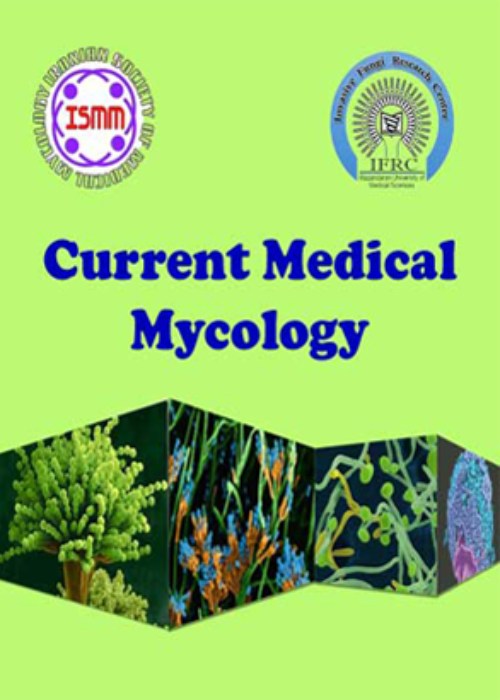Detection of ERG11 point mutations in iranian fluconazole-resistant Candida albicans isolates
Author(s):
Abstract:
Background and Purpose
Candidiasis is referred to a group of superficial and deep-tissue fungal infections often caused by Candida albicans. The superficial infections affect the oral, oropharynx, esophagus, and vaginal mucosa. The treatment of choice for these infections is the use of azoles, such as fluconazole. However, the increased use of these antifungal agents has led to the emergence of azole-resistant isolates of C. albicans. Different mechanisms have been suggested for the development of drug resistance, such as mutations in the encoding gene ERG11. Mutations in ERG11 result in changes in the ERG11p spatial construction and reduce the affinity between the protein and azole. This study aimed to determine the susceptibility profile of C. albicans clinical isolates to fluconazole using microdilution method. The present research was also targeted toward the detection of mutations that might be related to fluconazole resistance by the amplification and sequencing of ERG11 gene.
Materials and Methods
This study was conducted on a total of 216 clinical isolates obtained from Mashhad, Isfahan, and Tehran cities in Iran, during 2016-2018. The clinical isolates were identified using molecular techniques. Furthermore, minimum inhibitory concentration (MICs) was determined according to the clinical and laboratory standards institute M27-A3 and M27-S4 documents. The concentration range for fluconazole was obtained as 0.063-64 μg/ml. In the resistant strains, ERG11 genes were amplified by specific primers. Subsequently, cycle sequencing reactions were performed on purified polymerase chain reaction (PCR) products in forward and reverse directions. Finally, the results were analyzed by MEGA (version 7) and Gene Runner software (version 6.5.30).
Results
Out of 216 strains, 100 (46.3%) species were identified as C. albicans. The MIC values for fluconazole had a range of 0.125-16 μg/ml with the MIC50 and MIC90 values of 0.5 and 1 μg/ml, respectively. Totally, 41 nucleotide changes were detected among 4 resistant isolates. In this regard, 4 out of 41 mutations in codons caused changes in ERG11p; however, these mutations did not lead to fluconazole resistance.
Conclusion
Fluconazole resistance among clinical isolates is not merely due to the changes in ERG11p. This resistance may be also related to some other mechanisms, such as the prevention of the intracellular accumulation of the antifungal agent and alteration of the target enzyme to diminish drug binding.Keywords:
Language:
English
Published:
Current Medical Mycology, Volume:5 Issue: 1, Mar 2019
Pages:
7 to 14
magiran.com/p1946820
دانلود و مطالعه متن این مقاله با یکی از روشهای زیر امکان پذیر است:
اشتراک شخصی
با عضویت و پرداخت آنلاین حق اشتراک یکساله به مبلغ 1,390,000ريال میتوانید 70 عنوان مطلب دانلود کنید!
اشتراک سازمانی
به کتابخانه دانشگاه یا محل کار خود پیشنهاد کنید تا اشتراک سازمانی این پایگاه را برای دسترسی نامحدود همه کاربران به متن مطالب تهیه نمایند!
توجه!
- حق عضویت دریافتی صرف حمایت از نشریات عضو و نگهداری، تکمیل و توسعه مگیران میشود.
- پرداخت حق اشتراک و دانلود مقالات اجازه بازنشر آن در سایر رسانههای چاپی و دیجیتال را به کاربر نمیدهد.
In order to view content subscription is required
Personal subscription
Subscribe magiran.com for 70 € euros via PayPal and download 70 articles during a year.
Organization subscription
Please contact us to subscribe your university or library for unlimited access!




